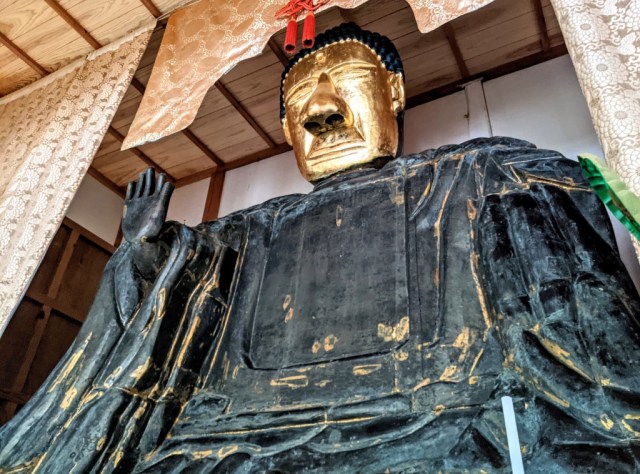
The Arifuku Daibutsu in Shimane Prefecture is free for viewing by the public.
Arifuku Onsen in Gotsu, Shimane Prefecture is a sleepy little hot spring town with an unexpected symbol. Our Japanese-language reporter Masanuki Sunakoma had heard some interesting rumors about the Arifuku Daibutsu (Giant Buddha of Arifuku/有福大仏) and recently decided to pay it a visit for himself.
▼ Sign for Arifuku Onsen, Gotsu City
First of all, Arifuku Onsen boasts over 1,350 years of history. The hot springs were supposedly discovered in the time of Prince Shotoku (574-622 CE) by a semi-legendary sage and are known for their skin-healing restorative properties. Just as the auspicious kanji in its name suggest, good fortune is said to be found here.
▼ The townscape itself has a retro feel where time seems to have stopped.
The prevalence of stone steps leading to various places around town is often likened to Ikaho Onsen in Gunma Prefecture and therefore the town is sometimes called “Ikaho in the shade of the mountain.” Of particular note is that visitors can also enjoy viewing the local Iwami version of kagura, a type of traditional Shinto ceremonial dance (remember that dance scene in Your Name?). As Masanuki was musing over such things he spied a sign that pointed him towards his destination.
The Arifuku Daibutsu is housed in a small temple on elevated ground. At the time of his visit the building was surrounded by the gorgeous hues of autumn.
A path of moss-covered stone steps cloaked with fallen ginkgo leaves led the way up a small hill while further setting the atmosphere. (Be careful not to slip at this part.)
Masanuki caught his first glimpse of the full building at the top.
The temple’s doors were closed but a sign welcomed him to go inside.
Behold the moment when he pushed open the doors…
…and was greeted by the shiny gold face of the resident Arifuku Daibutsu.
▼ Excuse me, sir, you’re looking a bit gold in the face.
What a very unorthodox-looking Giant Buddha indeed. However, Masanuki felt a particular affinity for the statue’s unique face as if it were someone he actually knew and not an ancient relic. Its rather simple expression contrasted with the luminous gold coating and the word that came to his mind was–dare he say it–kawaii, or cute. The longer he stared at it, the fonder of its appearance he became.
From what he’d heard, the statue had been carved from a large camphor tree. Despite being approximately three meters (9.84 feet) tall, it wasn’t intimidating at all but rather gave off a sense of welcome. Its calm expression also lent a certain sense of peace to the viewer. All in all, Masanuki had the feeling that its appearance was closer to one of the ubiquitous mascot characters (yurukyara) found throughout Japan than anything else.
▼ The Arifuku Daibutsu: A cousin to the likes of Kumamon and Funasshi?
Masanuki closes by mentioning that someone who made a wish to the Arifuku Daibutsu to win the lottery actually won a large sum of money. Perhaps we should all pay it a visit before the end of this month to pray that next year will be better than this one–or at least to save the beloved mascot characters in the wake of the coronavirus.
Images © SoraNews24
● Want to hear about SoraNews24’s latest articles as soon as they’re published? Follow us on Facebook and Twitter!
[ Read in Japanese ]

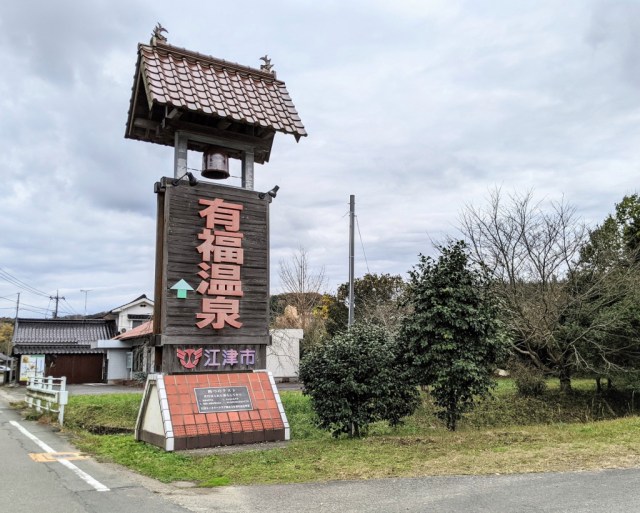
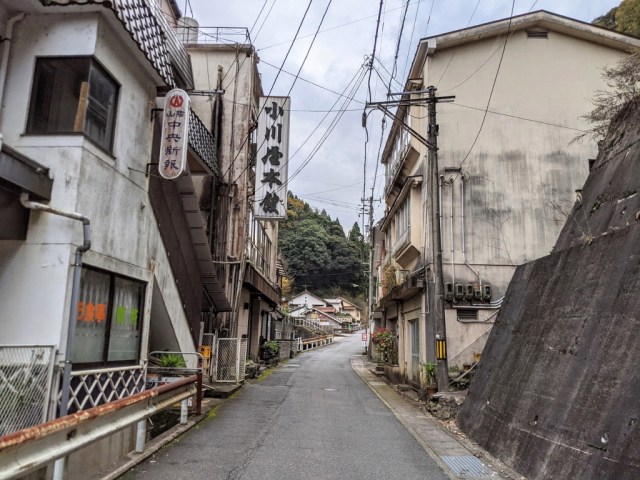
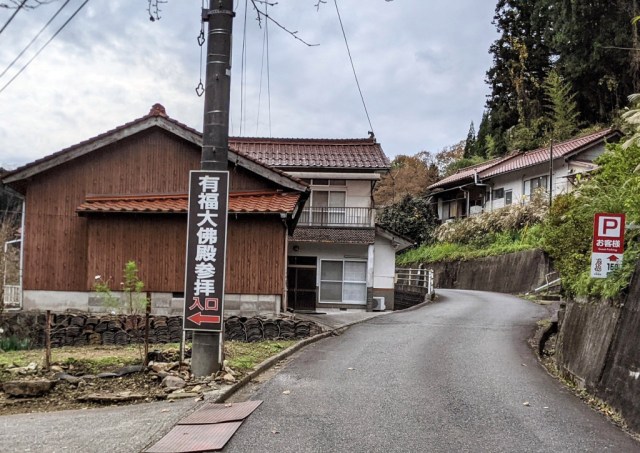
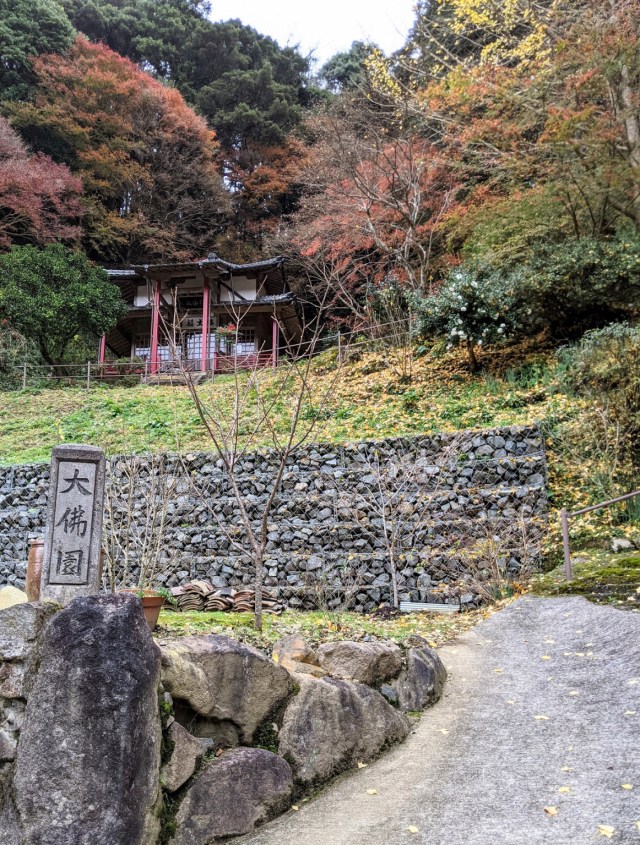
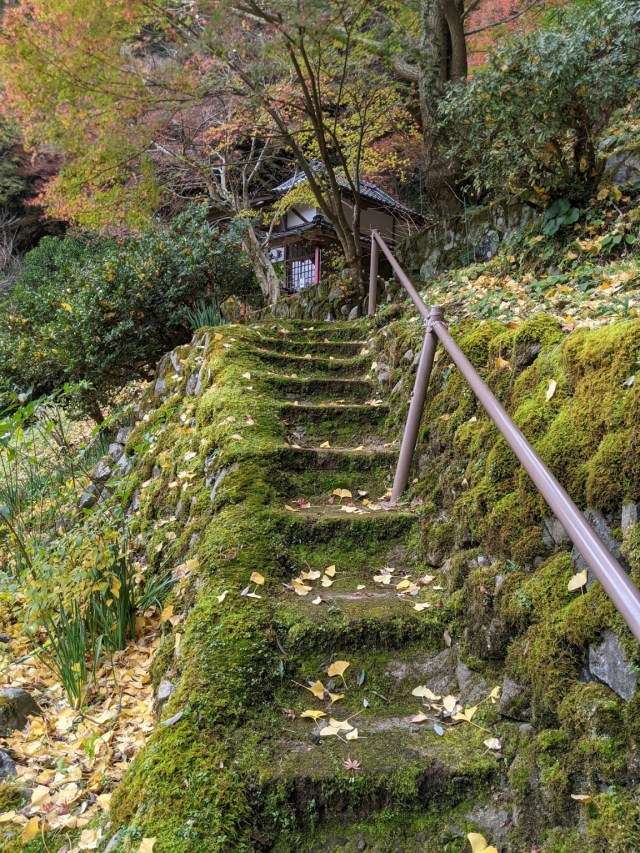
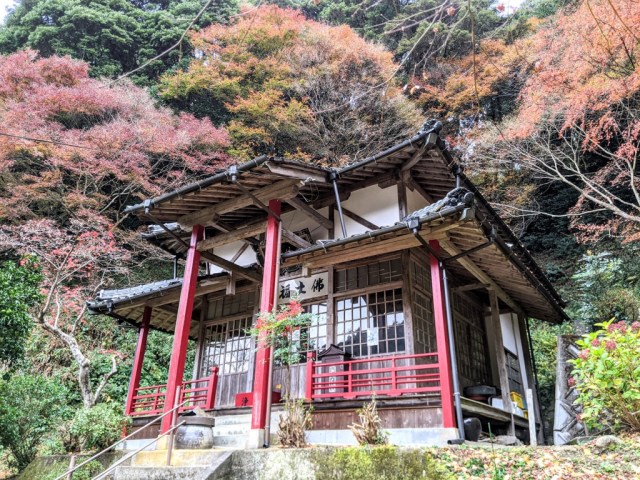
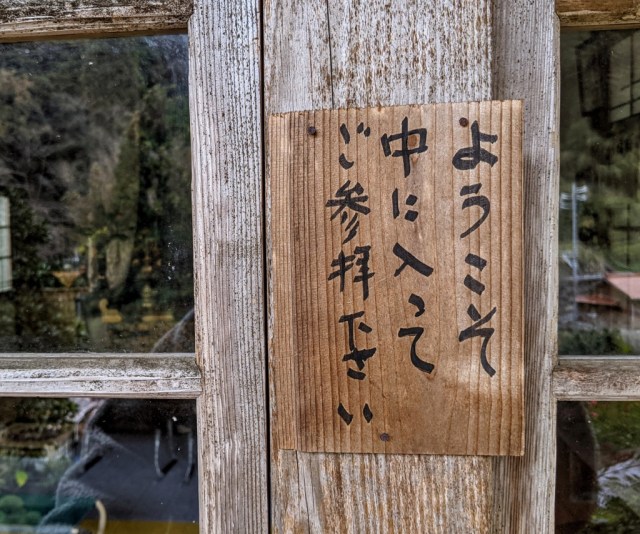
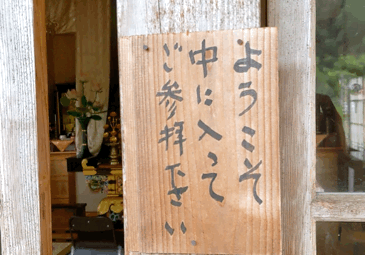
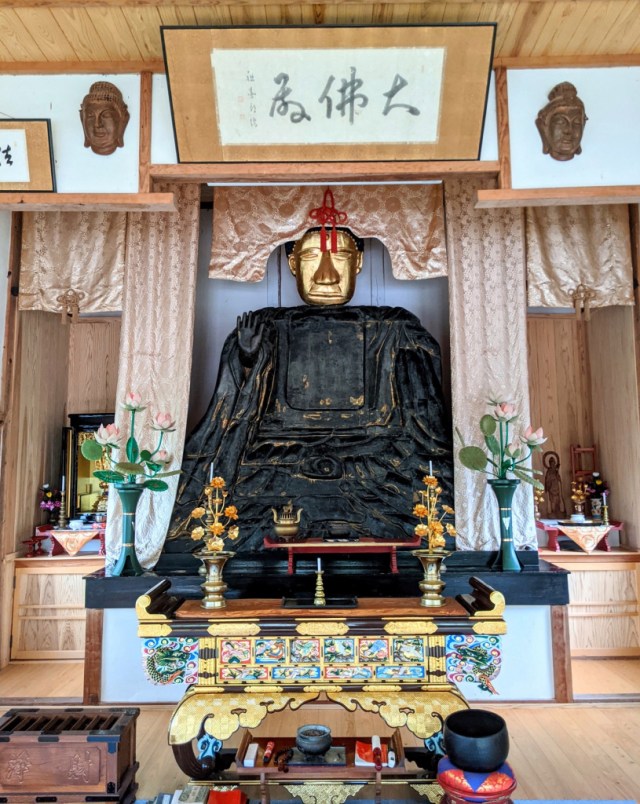
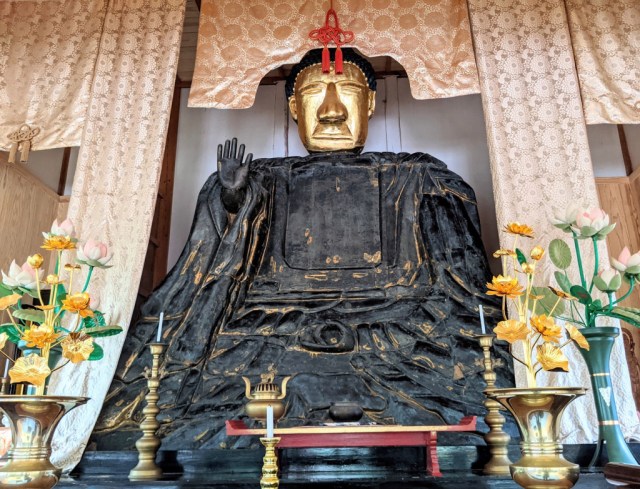
 How big (small?) is the smallest Great Buddha statue in Japan? Let’s visit and find out【Photos】
How big (small?) is the smallest Great Buddha statue in Japan? Let’s visit and find out【Photos】 Giant temple in mountains of Japan is also one of its most impressive tapioca bubble tea cafes
Giant temple in mountains of Japan is also one of its most impressive tapioca bubble tea cafes Buddha vs Eva, Ultraman, Gundam and Lady Liberty: How the otherworldly measure up
Buddha vs Eva, Ultraman, Gundam and Lady Liberty: How the otherworldly measure up Afro Buddha, usually only displayed one day a year, gets rare extended viewing until mid-October
Afro Buddha, usually only displayed one day a year, gets rare extended viewing until mid-October Shrine in Japan issues “beautiful woman certificates,” so we went to get one【Photos】
Shrine in Japan issues “beautiful woman certificates,” so we went to get one【Photos】 How to order snacks on a Shinkansen bullet train in Japan
How to order snacks on a Shinkansen bullet train in Japan Japan’s new difficult-to-drink-from beer glass protects your liver, but it’s a brutal experience
Japan’s new difficult-to-drink-from beer glass protects your liver, but it’s a brutal experience Burger King Japan suddenly adds Dr. Pepper and Dr. Pepper floats to its menu nationwide
Burger King Japan suddenly adds Dr. Pepper and Dr. Pepper floats to its menu nationwide Demon Slayer: Kimetsu no Yaiba gets new roller coaster attractions and food at Universal Studios Japan
Demon Slayer: Kimetsu no Yaiba gets new roller coaster attractions and food at Universal Studios Japan Hello, cosmetics! Clinique teams up with Hello Kitty this summer for first-time collaboration
Hello, cosmetics! Clinique teams up with Hello Kitty this summer for first-time collaboration Kyoto Tower mascot termination reveals dark side behind cute Japanese characters
Kyoto Tower mascot termination reveals dark side behind cute Japanese characters Nintendo history you can feel – Super NES, N64, and GameCube controllers become capsule toys
Nintendo history you can feel – Super NES, N64, and GameCube controllers become capsule toys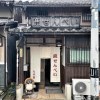 This Nara workshop has been making deer crackers for more than 100 years and offers tours【Photos】
This Nara workshop has been making deer crackers for more than 100 years and offers tours【Photos】 High-fashion Totoro cuddle purse is like an elegant stroll in the forest【Photos】
High-fashion Totoro cuddle purse is like an elegant stroll in the forest【Photos】 Legendary Melon Bread by Tokyo Banana returns after 20-year absence【Taste Test】
Legendary Melon Bread by Tokyo Banana returns after 20-year absence【Taste Test】 “The most Delicious Cup Noodle in history” – Japan’s French Cup Noodle wins our heart【Taste test】
“The most Delicious Cup Noodle in history” – Japan’s French Cup Noodle wins our heart【Taste test】 Starbucks releases a cute Frappuccino and Unicorn Cake…but not in Japan
Starbucks releases a cute Frappuccino and Unicorn Cake…but not in Japan McDonald’s Japan’s Soft Twist Tower: A phantom ice cream only sold at select branches
McDonald’s Japan’s Soft Twist Tower: A phantom ice cream only sold at select branches Yabai Ramen: What makes this Japanese ramen so dangerous?
Yabai Ramen: What makes this Japanese ramen so dangerous? Finally! Nintendo Japan expands Switch 8-bit controller sales to everybody, Online member or not
Finally! Nintendo Japan expands Switch 8-bit controller sales to everybody, Online member or not Japanese government wants to build luxury resorts in all national parks for foreign tourists
Japanese government wants to build luxury resorts in all national parks for foreign tourists To combat declining birth rate, Japan to begin offering “Breeding Visas” to foreigners
To combat declining birth rate, Japan to begin offering “Breeding Visas” to foreigners 10 things you should buy at 7-Eleven in Japan
10 things you should buy at 7-Eleven in Japan Studio Ghibli releases anime heroine cosplay dresses that are super comfy to wear
Studio Ghibli releases anime heroine cosplay dresses that are super comfy to wear Woman charged for driving suitcase without a license in Osaka
Woman charged for driving suitcase without a license in Osaka Studio Ghibli unveils My Neighbour Totoro miniature house model
Studio Ghibli unveils My Neighbour Totoro miniature house model Kyoto experiencing problems with foreign tourists not paying for bus fares, but not on purpose
Kyoto experiencing problems with foreign tourists not paying for bus fares, but not on purpose Fighting mild hunger with a Japanese soda that turns into jelly in the stomach【Taste test】
Fighting mild hunger with a Japanese soda that turns into jelly in the stomach【Taste test】 Studio Ghibli’s Howl’s Moving Castle tapestry unveiled in Japan for first time
Studio Ghibli’s Howl’s Moving Castle tapestry unveiled in Japan for first time McDonald’s new Happy Meals offer up cute and practical Sanrio lifestyle goods
McDonald’s new Happy Meals offer up cute and practical Sanrio lifestyle goods Sales of Japan’s most convenient train ticket/shopping payment cards suspended indefinitely
Sales of Japan’s most convenient train ticket/shopping payment cards suspended indefinitely Sold-out Studio Ghibli desktop humidifiers are back so Totoro can help you through the dry season
Sold-out Studio Ghibli desktop humidifiers are back so Totoro can help you through the dry season Japanese government to make first change to romanization spelling rules since the 1950s
Japanese government to make first change to romanization spelling rules since the 1950s Foreigner’s request for help in Tokyo makes us sad for the state of society
Foreigner’s request for help in Tokyo makes us sad for the state of society Ghibli founders Toshio Suzuki and Hayao Miyazaki contribute to Japanese whisky Totoro label design
Ghibli founders Toshio Suzuki and Hayao Miyazaki contribute to Japanese whisky Totoro label design Doraemon found buried at sea as scene from 1993 anime becomes real life【Photos】
Doraemon found buried at sea as scene from 1993 anime becomes real life【Photos】 Tokyo’s most famous Starbucks is closed
Tokyo’s most famous Starbucks is closed Princesses, fruits, and blacksmiths: Study reveals the 30 most unusual family names in Japan
Princesses, fruits, and blacksmiths: Study reveals the 30 most unusual family names in Japan This little-known temple in rural Japan has a giant Buddha bigger than Kamakura’s or Nara’s【Pics】
This little-known temple in rural Japan has a giant Buddha bigger than Kamakura’s or Nara’s【Pics】 Remote airport in Shimane serves up the best honey in all Japan: Airport Honey!
Remote airport in Shimane serves up the best honey in all Japan: Airport Honey! Gunma Prefecture’s adorable mascot dances into our hearts and travel plans 【Video】
Gunma Prefecture’s adorable mascot dances into our hearts and travel plans 【Video】 Foreigner visiting Japan? Don’t forget to get your free-to-use smartphone from Kanagawa
Foreigner visiting Japan? Don’t forget to get your free-to-use smartphone from Kanagawa 100 things to do in Japan in 100 seconds 【Video】
100 things to do in Japan in 100 seconds 【Video】 We enjoyed Saitama’s finest hot springs, saunas, and views for less than 3,000 yen
We enjoyed Saitama’s finest hot springs, saunas, and views for less than 3,000 yen Enormous Buddhist Kannon statue in Sendai shocks visitors with otherworldly looming
Enormous Buddhist Kannon statue in Sendai shocks visitors with otherworldly looming Japan’s government reconsiders plan to change country’s iconic hot spring symbol after backlash
Japan’s government reconsiders plan to change country’s iconic hot spring symbol after backlash We eat a meal to remember…at a Japanese police station in Fukuoka
We eat a meal to remember…at a Japanese police station in Fukuoka Heading off the beaten path in Hokkaido for a beautiful view and local sweets
Heading off the beaten path in Hokkaido for a beautiful view and local sweets This decommissioned bus on the side of the road in Tochigi serves up some tasty ramen
This decommissioned bus on the side of the road in Tochigi serves up some tasty ramen We go looking for the free kaoyu hot spring facebath of onsen town Kusatsu【Photos】
We go looking for the free kaoyu hot spring facebath of onsen town Kusatsu【Photos】 The Big Bomb Onigiri Japanese rice ball helps us conquer mountain race but conquers us in the end
The Big Bomb Onigiri Japanese rice ball helps us conquer mountain race but conquers us in the end This bath bomb looks and feels like an Edo gold bar, is great for gifts or bathing like a shogun
This bath bomb looks and feels like an Edo gold bar, is great for gifts or bathing like a shogun Let’s visit Machu Picchu located in the mountains of USA, Japan!
Let’s visit Machu Picchu located in the mountains of USA, Japan!
Leave a Reply